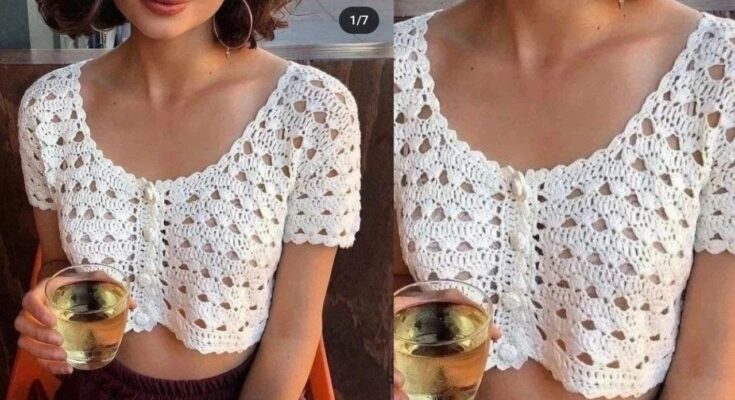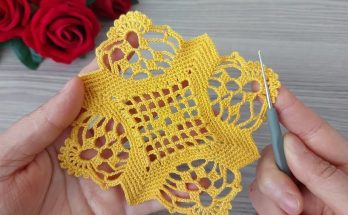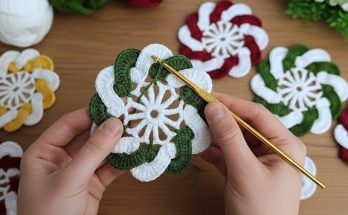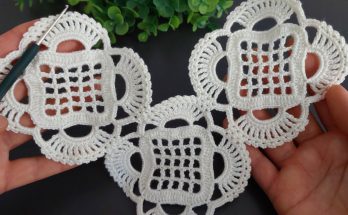Crocheting a garment like a blouse might seem like a monumental task, especially for beginners. Visions of complex shaping, intricate lace, and endless counting can be daunting. However, creating a beautiful and wearable crochet blouse can be surprisingly straightforward when you choose the right stitch patterns. The key lies in selecting stitches that offer a lovely drape, are repetitive and easy to master, and build fabric relatively quickly.
This detailed article will explore several easy crochet stitch patterns perfect for a women’s blouse, focusing on simplicity, drape, and visual appeal, making your first foray into garment crocheting a satisfying success.
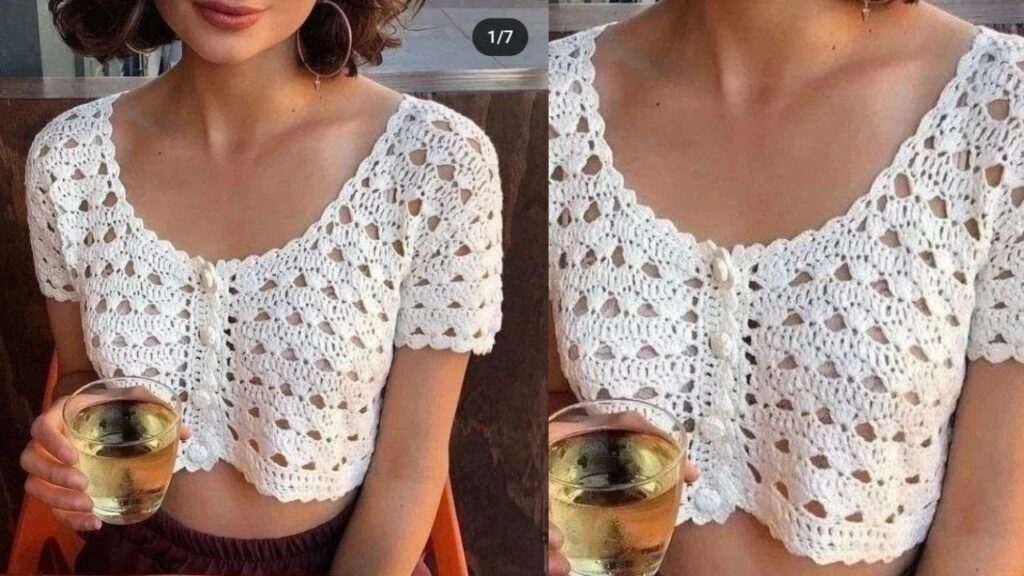
Why Choose Simple Stitch Patterns for a Blouse?
- Beginner-Friendly: Repetitive patterns allow you to focus on tension and consistency, rather than complex stitch combinations.
- Faster Work-Up: Many easy stitches create fabric quickly, giving you a sense of progress and motivation.
- Beautiful Drape: The right simple stitch can produce a fabric that hangs beautifully on the body, essential for a flattering blouse.
- Versatility: These stitches often look great in various yarn weights and colors, offering endless design possibilities.
- Less Seaming/Shaping Stress: Simple stitches are easier to work with when you’re learning basic garment construction (like working flat panels or simple increases/decreases).
Key Considerations for a Crochet Blouse
Before diving into stitches, remember these general tips for crocheting garments:
- Yarn Choice is Crucial: For blouses, look for DK (Light Worsted / 3) or Fingering/Sport (2) weight yarns.
- Fibers: Cotton, linen, bamboo, silk blends, or lightweight acrylics are excellent as they offer drape, breathability, and are comfortable against the skin. Avoid stiff or overly heavy yarns unless you want a more structured top.
- Gauge Swatch (Absolutely Essential!): Always, always make a gauge swatch. This determines how many stitches and rows per inch/cm you get. It’s the only way to ensure your blouse turns out the correct size.
- Drape vs. Structure: For a blouse, you generally want good drape. Choose stitch patterns that are a bit “airy” or flexible, rather than overly dense or stiff.
- Construction Method: Many beginner blouses are constructed from simple rectangles (front and back panels) seamed together, with basic armhole and neckline shaping. This makes the stitch pattern the star.
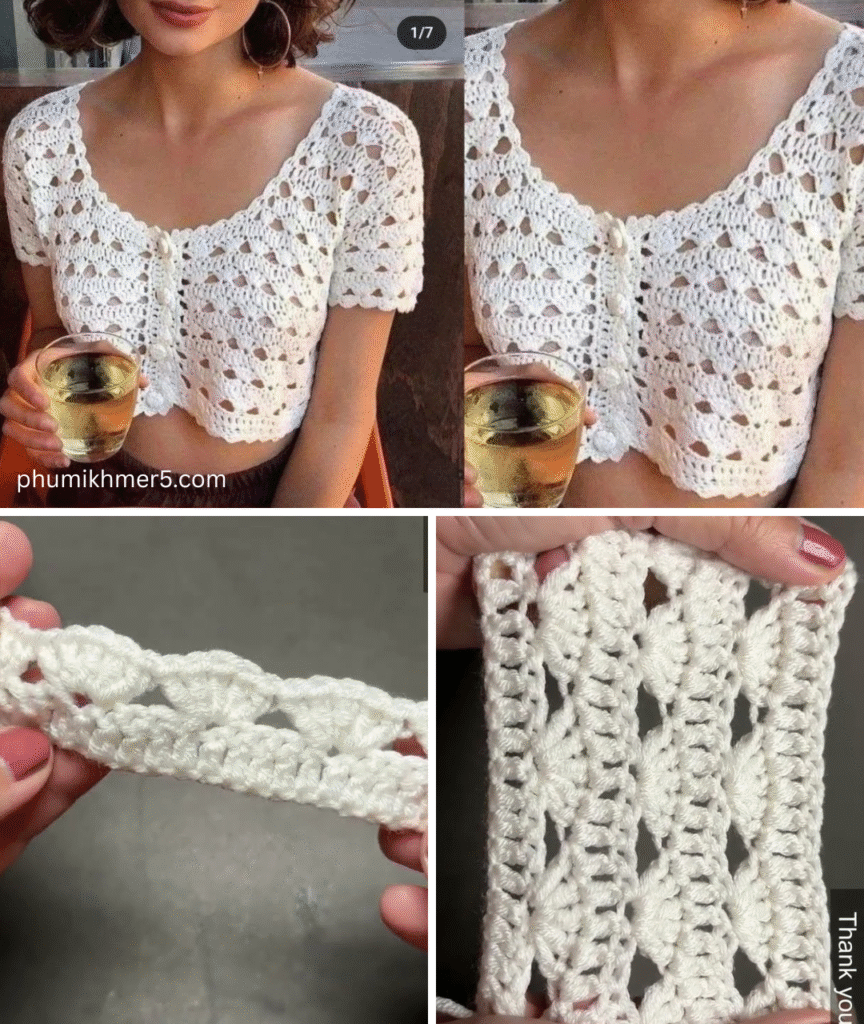
Easy Crochet Stitch Patterns for a Women’s Blouse
Let’s explore some fantastic stitch patterns that are both beautiful and easy to master for a blouse.
1. The Classic: Double Crochet (DC) Fabric
The double crochet stitch is a workhorse for a reason. It’s one of the fastest stitches to work, creates a lovely, soft fabric, and has good drape.
- How it’s made: Yarn over (YO), insert hook into stitch, YO, pull up a loop (3 loops on hook), YO, pull through 2 loops, YO, pull through last 2 loops.
- Why it’s great for blouses:
- Speed: Builds height quickly, so your blouse will grow faster.
- Drape: Creates a soft, pliable fabric that drapes well, especially with lighter weight yarns.
- Simplicity: Very repetitive and easy to get into a rhythm.
- Tips for a blouse:
- Consistent Tension: Practice to keep your tension even for a smooth fabric.
- Turning Chains: Pay attention to whether your turning chain (usually Ch 3 for DC) counts as a stitch or not, as per your pattern. This is crucial for straight edges.
- Variations: You can alternate colors every few rows for simple stripes, or work into the back loop only (BLO) for a subtle ribbed texture.
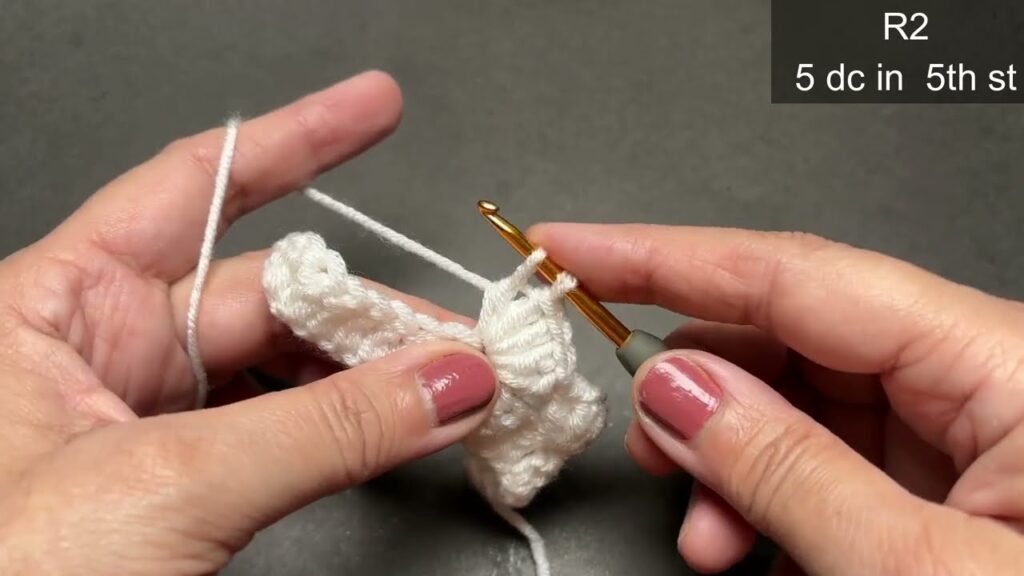
2. The Textured Touch: Half Double Crochet (HDC) Fabric
The half double crochet stitch is a fantastic middle ground between single crochet and double crochet. It’s denser than DC but works up faster than SC, offering a lovely texture.
- How it’s made: YO, insert hook into stitch, YO, pull up a loop (3 loops on hook), YO, pull through all 3 loops on hook.
- Why it’s great for blouses:
- Texture: Creates a slightly denser, yet still soft, fabric with a subtle horizontal bar texture on one side.
- Drape: Offers good drape, though a bit less airy than DC.
- Durability: The denser fabric might feel a bit more substantial for a top.
- Tips for a blouse:
- Consistent Edges: Ensure you consistently work into the first and last stitch/turning chain of each row to keep straight sides.
- Working in BLO: Working HDC into the back loop only creates a beautiful ribbed pattern, ideal for cuffs or necklines, or even an all-over flexible fabric.
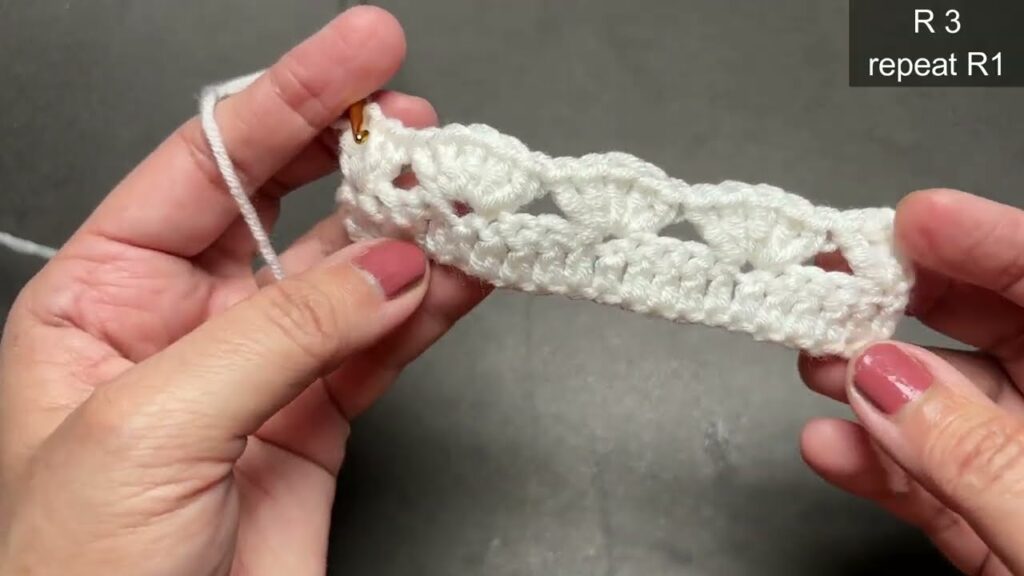
3. The Breezy Option: Chain Spaces & Shells
Introducing simple chain spaces or small shell clusters can add a delicate, openwork feel to your blouse without being overly complicated.
- Basic Chain Space Pattern (Simple Mesh/Lattice):
- How it’s made: Often uses (DC, Ch 1, Sk 1) repeat, or (DC, Ch 2, Sk 2) repeat.
- Why it’s great for blouses: Creates a very airy, breathable fabric perfect for summer blouses or layering. It works up incredibly fast.
- Tips: Ensure your chains are consistent in size to avoid puckering.
- Simple Shell Stitch (Small Shells):
- How it’s made: Usually a cluster of stitches (e.g., 3 DC or 5 DC) worked into a single stitch or chain space, often separated by a skip.
- Why it’s great for blouses: Adds a beautiful, scalloped texture that looks more intricate than it is. Creates a lovely drape and a slightly open fabric.
- Example Pattern: (3 DC in next stitch, skip 2 stitches) repeat.
- Tips: Practice the stitch repeat to maintain consistent shells.
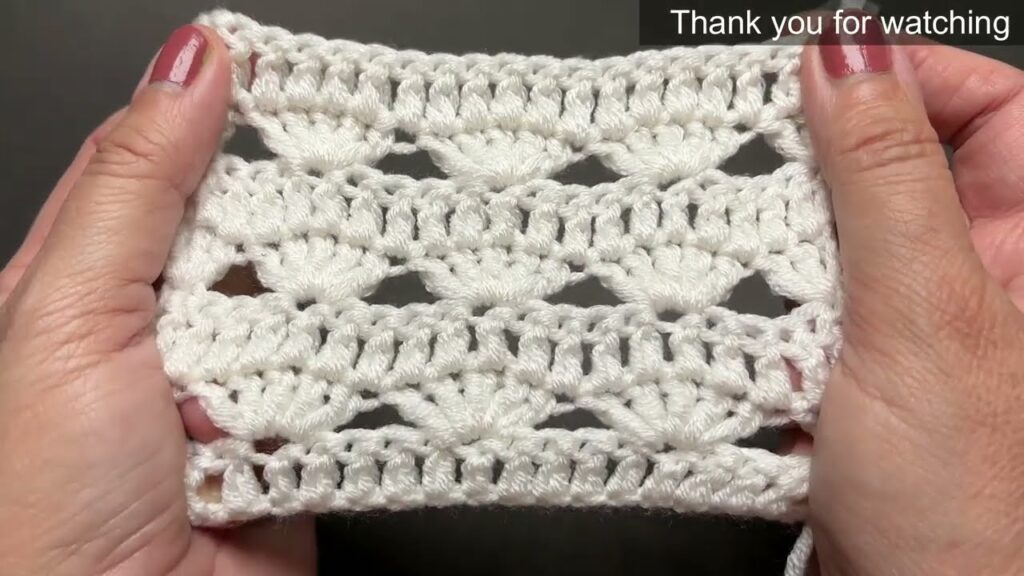
4. The Unique Texture: Lemon Peel Stitch (Alternating SC and DC)
This stitch creates a wonderfully rich, textured fabric that is dense yet flexible. It looks much more complex than it actually is!
- How it’s made: Alternate single crochet (SC) and double crochet (DC) stitches across each row. In subsequent rows, you always work an SC into a DC from the previous row, and a DC into an SC from the previous row.
- Why it’s great for blouses:
- Rich Texture: Creates a bumpy, interesting fabric that hides minor tension inconsistencies.
- Durable: A sturdy fabric without being stiff.
- Reversible: Looks good on both sides.
- Tips for a blouse:
- Counting: Keep careful count to ensure you’re alternating correctly.
- Even Rows: This stitch generally works best over an even number of stitches.
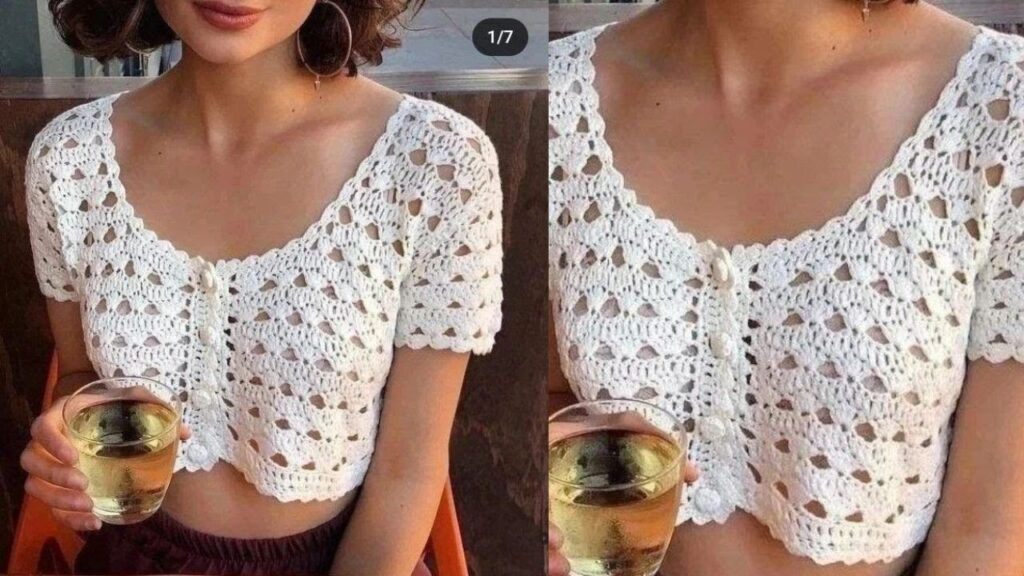
5. The Flexible Choice: Ribbing with Back Loop Only (BLO)
While not a full fabric pattern itself, using Back Loop Only (BLO) crochet with SC, HDC, or DC creates a beautiful ribbing that is incredibly flexible and comfortable.
- How it’s made: Instead of inserting your hook under both loops of the stitch, you only insert it under the loop furthest from you (the back loop).
- Why it’s great for blouses:
- Stretch and Comfort: Creates a very stretchy fabric, ideal for necklines, cuffs, or even the entire body of a fitted blouse.
- Defined Texture: Mimics knitted ribbing, giving a polished look.
- Tips for a blouse:
- Gauge will change: Your gauge will likely be different when working in BLO compared to both loops, so swatch accordingly.
- Less drape for full garment: While great for sections, an entire BLO blouse might be too form-fitting or less flowy than desired unless a very loose gauge is used. Excellent for a fitted top.

Designing Your Easy Crochet Blouse
Once you’ve chosen your stitch pattern, here’s a general approach for a simple beginner blouse:
- Front Panel:
- Chain for the desired width of your blouse (front panel).
- Work in your chosen stitch pattern (e.g., all DC, all HDC, or Lemon Peel) until the panel reaches your desired length from the bottom hem to the armpit.
- Armhole Shaping (Simple): For a beginner-friendly approach, you can simply Fasten Off the yarn. For a slightly shaped armhole, skip the first few stitches at the start of the next 2-3 rows, and also skip the last few stitches at the end of the next 2-3 rows.
- Continue working the top part of the panel for the shoulder straps/neckline opening.
- Back Panel: Repeat the front panel instructions exactly.
- Seaming:
- Place the front and back panels right sides together.
- Shoulder Seams: Sl st or sc across the top shoulder edges (leaving the neck opening unseamed).
- Side Seams: Sl st or sc up the side edges from the bottom hem to the start of the armhole shaping.
- Finishing Touches:
- Neckline & Armhole Edging: Add a simple round of SC or a decorative edge (like the simple shell stitch) around the neckline and armholes for a polished look.
- Weave in All Ends: Neatly hide all yarn tails.
- Block Your Blouse: This is crucial for garments. Wet or steam block your finished blouse to even out stitches, improve drape, and set the final shape.
By selecting one of these easy stitch patterns, you can confidently embark on crocheting your first women’s blouse. Remember to prioritize your gauge swatch, choose comfortable yarn, and enjoy the rewarding process of creating a stylish, handmade garment! Happy hooking!
Video tutorial:
